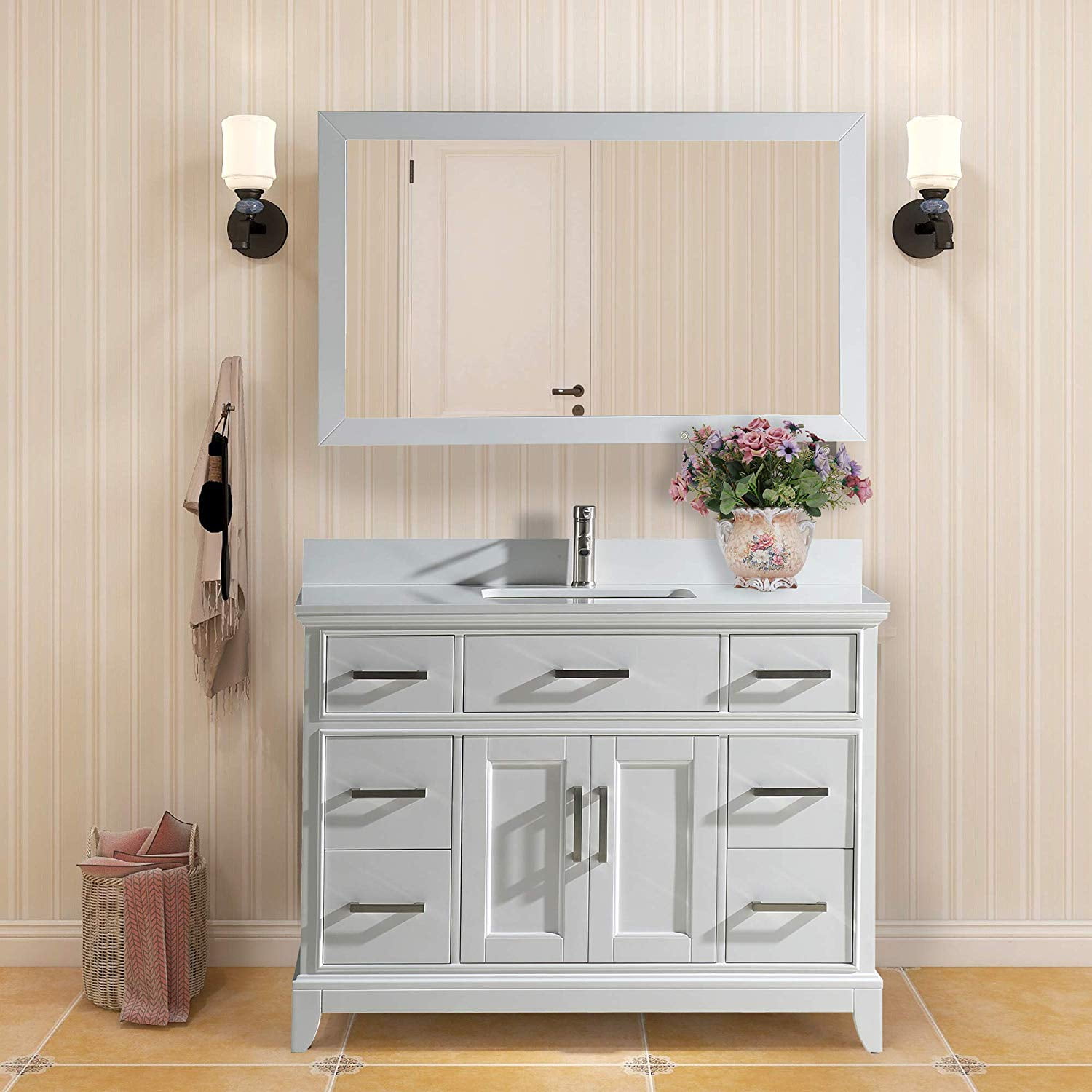Design Considerations

Bathroom sink cabinet plans – Designing a bathroom sink cabinet involves careful consideration of various factors to ensure functionality, aesthetics, and space optimization. These factors include:
Space Constraints:
– Determine the available space for the cabinet, including width, depth, and height.
– Consider the size of the sink, faucet, and any other fixtures that will be installed.
– Plan for adequate storage space without overcrowding the cabinet.
Storage Needs:
– Assess the storage requirements for bathroom essentials, such as toiletries, towels, and cleaning supplies.
– Determine the type of storage solutions needed, such as drawers, shelves, or a combination of both.
Aesthetic Preferences:
– Choose a cabinet style that complements the overall bathroom design.
– Consider the color, finish, and hardware to create a cohesive look.
Materials, Bathroom sink cabinet plans
Bathroom sink cabinets are typically constructed from various materials, each with its own advantages and disadvantages:
- Wood: Durable, aesthetically pleasing, and customizable, but requires regular maintenance.
- Laminate: Affordable, moisture-resistant, and available in a wide range of colors and patterns.
- Acrylic: High-gloss finish, durable, and easy to clean, but can be expensive.
- Thermofoil: Moisture-resistant, durable, and available in a variety of textures and colors.
- PVC: Moisture-proof, lightweight, and affordable, but not as durable as other materials.
Cabinet Structure and Functionality: Bathroom Sink Cabinet Plans

A bathroom sink cabinet is an essential piece of bathroom furniture that provides storage and support for the sink. It typically consists of a base, drawers, and doors. The base is the main support structure of the cabinet and is usually made of wood or metal. Drawers and doors provide storage space for toiletries, towels, and other bathroom essentials.
When choosing a bathroom sink cabinet, it is important to consider the size and shape of the space where it will be placed. The cabinet should be large enough to accommodate the sink and provide adequate storage space, but it should not be so large that it overwhelms the space. The shape of the cabinet should also be considered, as some cabinets are designed to fit into corners or other awkward spaces.
To maximize storage space within a bathroom sink cabinet, it is important to organize the shelves and drawers. Shelves can be used to store bulky items such as towels and toiletries, while drawers can be used to store smaller items such as cosmetics and toiletries. It is also a good idea to use drawer organizers to keep drawers neat and tidy.
Bathroom sink cabinet plans are crucial for ensuring the proper functionality of your bathroom. One important aspect to consider is the bathroom sink drain rough in height. This measurement determines the distance between the finished floor and the center of the drain outlet.
Getting this measurement right is essential to prevent water from leaking or backing up. Refer to bathroom sink drain rough in height for more detailed information. Once you have determined the appropriate height, you can finalize your bathroom sink cabinet plans and proceed with the installation.
Planning your bathroom sink cabinet is a breeze when you explore options like the 60 inch bathroom vanity top single sink. This sleek and spacious vanity top provides ample room for your bathroom essentials, while its single sink design ensures a clean and minimalist look.
With its durable construction and stylish finish, this vanity top will elevate the functionality and aesthetics of your bathroom. Continue exploring our wide selection of bathroom sink cabinet plans to find the perfect solution for your space.